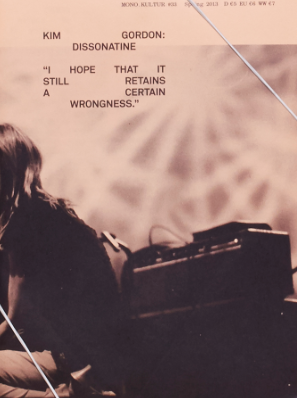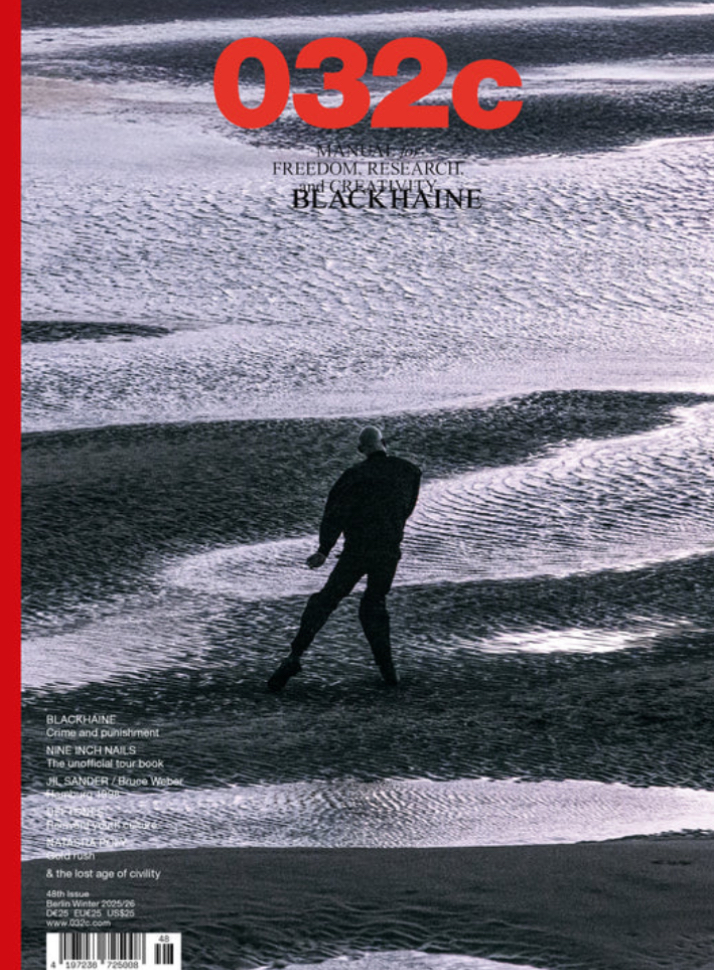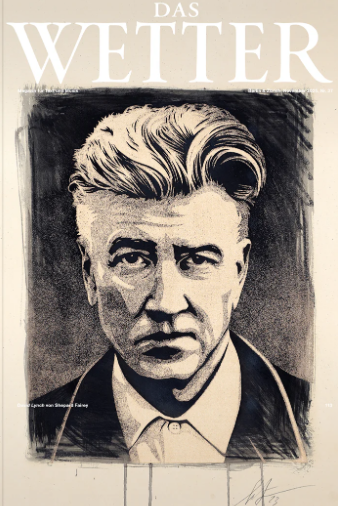#11058
interview magazine
#33 —- Kim Gordon
While Sonic Youth’s influence on past and current generations of experimental and punk music is undisputed, Kim Gordon’s role as a female figurehead in music and also in the visual arts might be a more complex one. Interestingly and contrary to the perception we have of current pop figures, the quieter, subtler voices might be the ones heard most clearly in the long term, slowly subverting mainstream culture from the edges. Very few female key figures in music, such as Laurie Anderson,Lydia Lunch and, of course, Kim Gordon, have managed to resist mass media and remain nonconformist without employing overt provocation as a tool to attract attention.
Neglecting or outright refusing the demand for professionalism led artists such as Gordon to just ‘make stuff’ without following a specific strategy. Attracted to the emerging art and music scene in New York of the 1980s, Gordon moved from Los Angeles to the East Coast, where she started playing in different bands before forming Sonic Youth with Thurston Moore and Lee Ranaldo in 1981. Simultaneously, Gordon participated in countless projects, from interior design to partly producing the seminal first album Pretty on the Inside by the band Hole; from working with Spike Jonze on directing the music video Cannonball by The Breeders to appearing in Gus van Sant’s hommage to Kurt Cobain,Last Days, to name but a few.
An essential and recurring part of Gordon’s creative practice, however, has been her fine art, which has been shown in several galleries and institutions, most recently in Berlin and New York. Her pieces mostly consist of text-based gestural paintings referring to the female body. In her performance work, Gordon experiments with noise and sound created through body movement and the combination of film and live music.
The impact over time of the record covers and general output of Sonic Youth became most evident when they were presented as whole body of work in the exhibitionSensational Fix in Düsseldorf in 2009. While the idea of presenting the ephemera of a punk rock band in an institutional art context might have raised some eyebrows at first, the show in fact told the story of the contemporary culture of an era, touching upon topics such as the search for identity, gender roles, fame, subculture, rebellion, and restlessness. It defined how music shaped our cultural identity in the second half of the 20th century, a role that might now slowly be disintegrating as our relationship to music is changing in the digital era.
5.00 €
not in stock





